
How to Use Caddx Ant FPV Camera 1200TVL Global WDR OSD Ultra Light Nano 16:9 for RC FPV: Examples, Pinouts, and Specs
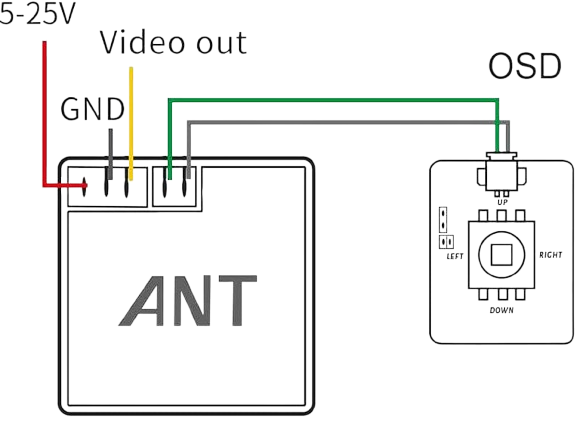
 Design with Caddx Ant FPV Camera 1200TVL Global WDR OSD Ultra Light Nano 16:9 for RC FPV in Cirkit Designer
Design with Caddx Ant FPV Camera 1200TVL Global WDR OSD Ultra Light Nano 16:9 for RC FPV in Cirkit DesignerIntroduction
The Caddx Ant FPV Camera is a lightweight, high-performance camera designed for use in remote-controlled (RC) vehicles, such as drones and FPV (First Person View) racing quads. With its 1200TVL resolution, global wide dynamic range (WDR), and on-screen display (OSD) capabilities, this camera delivers exceptional image quality and real-time telemetry data, even in challenging lighting conditions. Its ultra-lightweight design makes it ideal for applications where weight is a critical factor.
Explore Projects Built with Caddx Ant FPV Camera 1200TVL Global WDR OSD Ultra Light Nano 16:9 for RC FPV
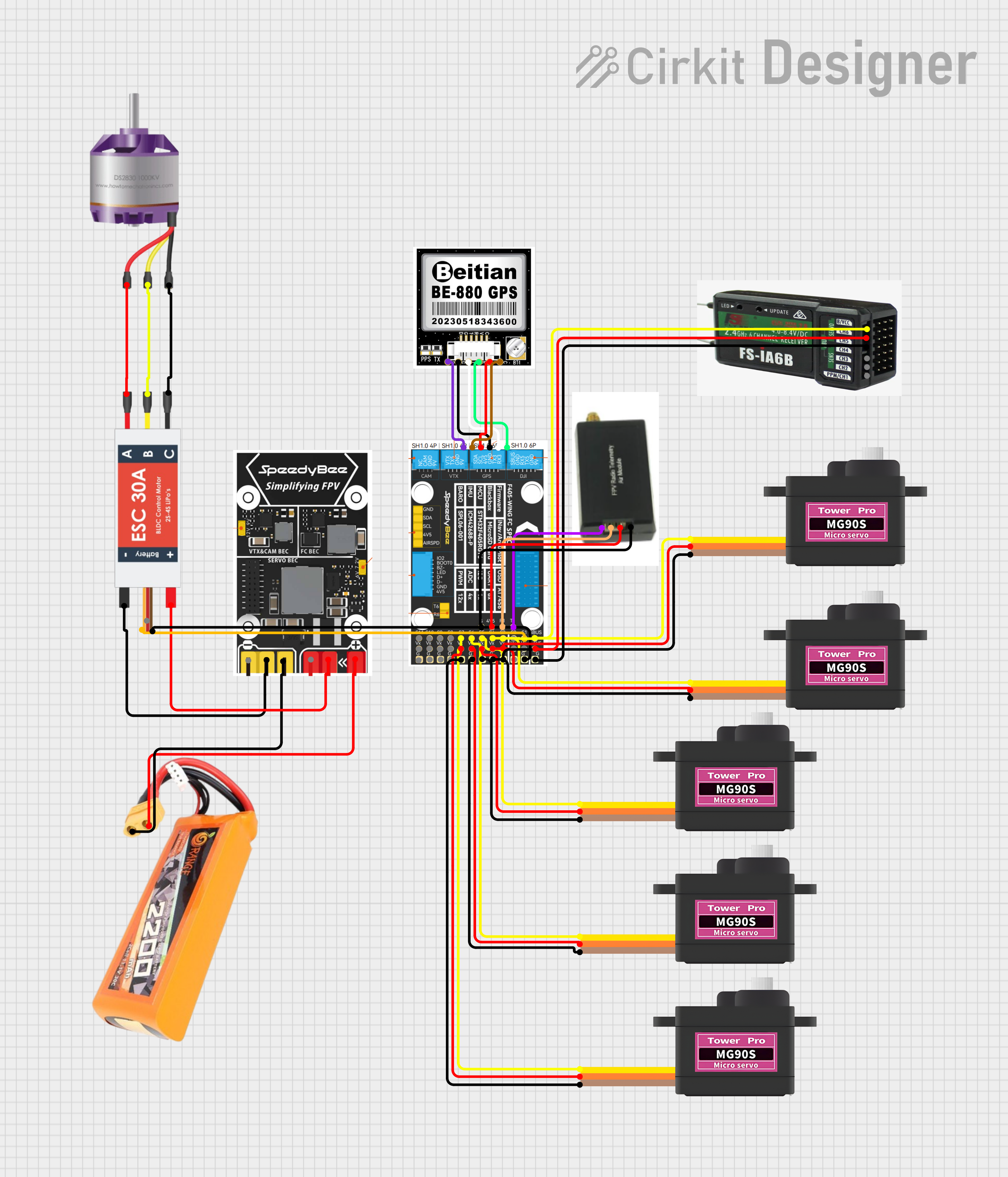
 Open Project in Cirkit Designer
Open Project in Cirkit Designer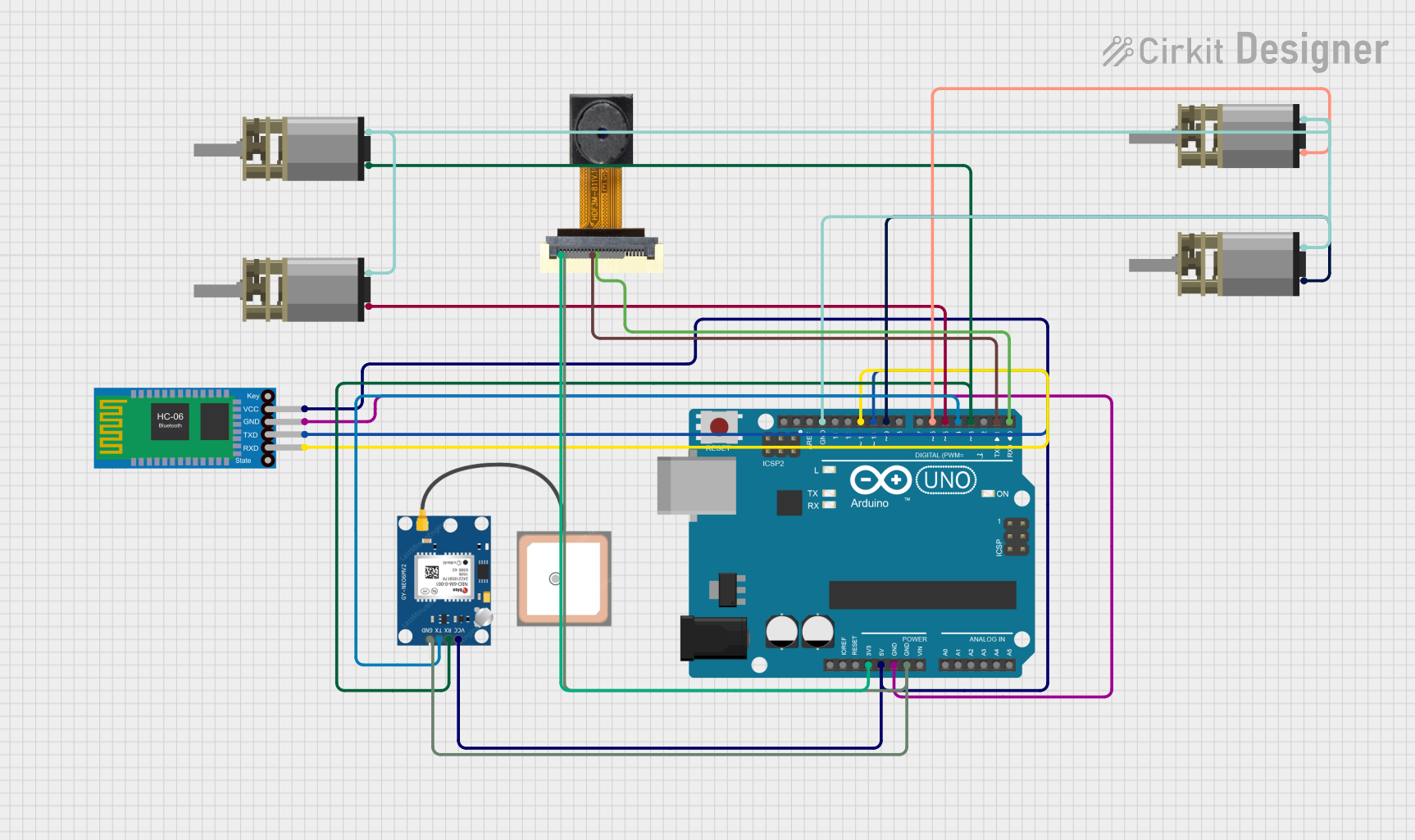
 Open Project in Cirkit Designer
Open Project in Cirkit Designer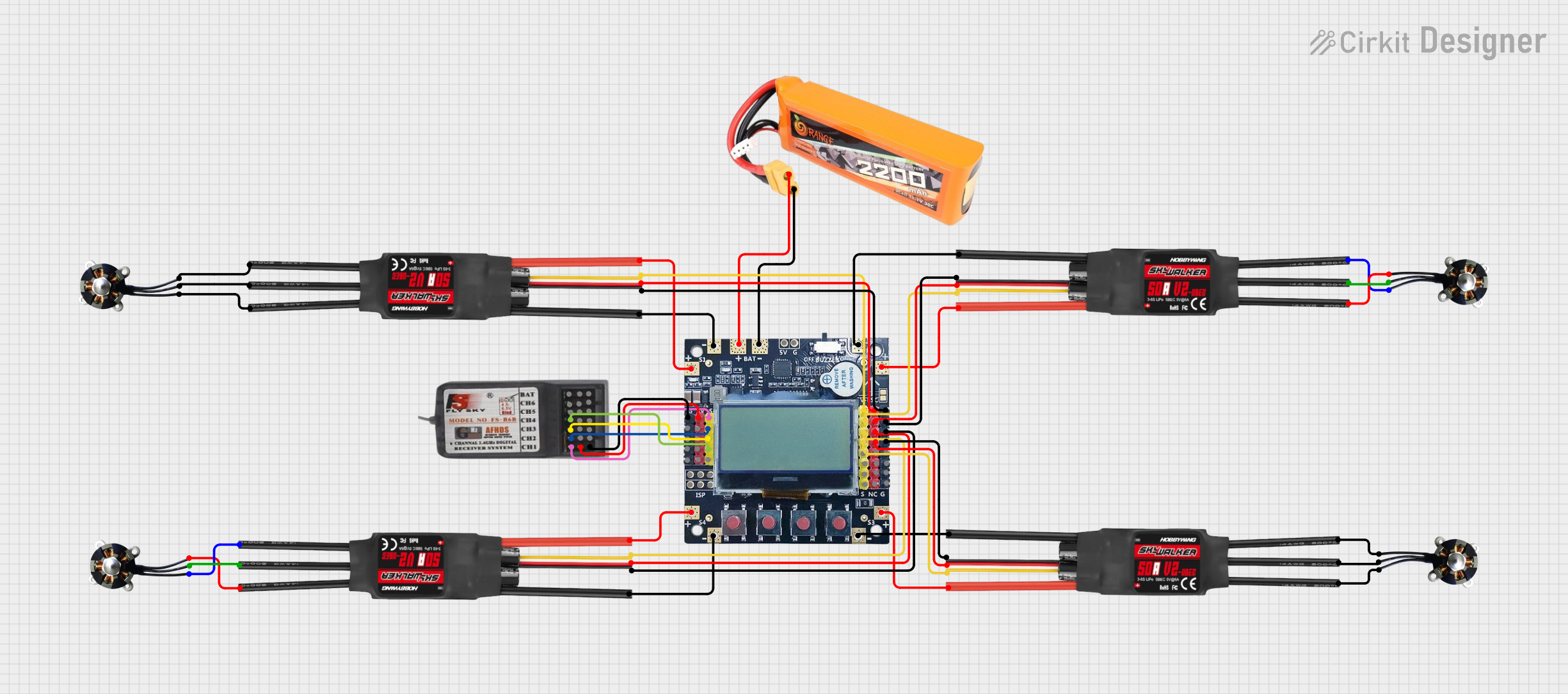
 Open Project in Cirkit Designer
Open Project in Cirkit Designer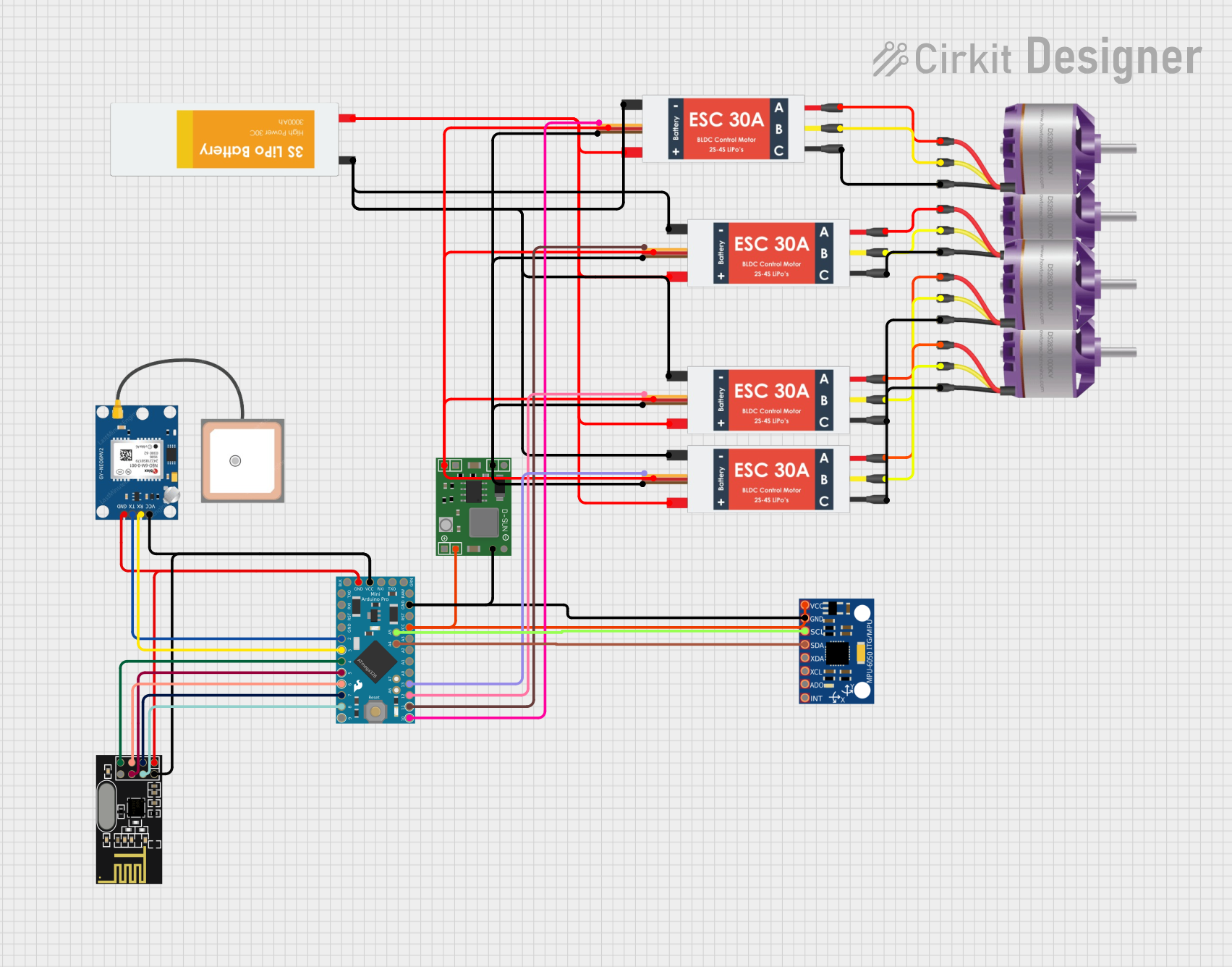
 Open Project in Cirkit Designer
Open Project in Cirkit DesignerExplore Projects Built with Caddx Ant FPV Camera 1200TVL Global WDR OSD Ultra Light Nano 16:9 for RC FPV

 Open Project in Cirkit Designer
Open Project in Cirkit Designer
 Open Project in Cirkit Designer
Open Project in Cirkit Designer
 Open Project in Cirkit Designer
Open Project in Cirkit Designer
 Open Project in Cirkit Designer
Open Project in Cirkit DesignerCommon Applications and Use Cases
- FPV racing drones for high-speed, low-latency video feeds.
- RC vehicles requiring real-time video transmission.
- Aerial photography and videography in dynamic lighting environments.
- Hobbyist and professional FPV setups for immersive experiences.
Technical Specifications
Below are the key technical details of the Caddx Ant FPV Camera:
| Specification | Details |
|---|---|
| Resolution | 1200TVL |
| Aspect Ratio | 16:9 |
| Lens | 2.1mm |
| Field of View (FOV) | 165° |
| Image Sensor | 1/3" CMOS |
| Wide Dynamic Range (WDR) | Global WDR |
| Signal System | PAL/NTSC (switchable) |
| Input Voltage | 3.7V - 18V |
| Power Consumption | ≤200mA @ 5V |
| Dimensions | 14mm x 14mm x 16mm |
| Weight | 2g |
| On-Screen Display (OSD) | Supported |
| Operating Temperature | -20°C to 60°C |
Pin Configuration and Descriptions
The Caddx Ant FPV Camera features a 4-pin connector for power, video, and control. Below is the pinout:
| Pin | Name | Description |
|---|---|---|
| 1 | GND | Ground connection for power and signal. |
| 2 | VCC | Power input (3.7V - 18V). |
| 3 | VIDEO | Analog video output for FPV transmission. |
| 4 | OSD/Control | UART connection for OSD configuration and control. |
Usage Instructions
How to Use the Component in a Circuit
- Power Connection: Connect the VCC pin to a power source within the range of 3.7V to 18V. Ensure the GND pin is connected to the ground of the power source.
- Video Output: Connect the VIDEO pin to the video input of your FPV transmitter or display device.
- OSD Configuration: Use the OSD/Control pin to configure the on-screen display settings via a UART interface. This allows you to customize telemetry data displayed on the screen.
Important Considerations and Best Practices
- Voltage Range: Ensure the input voltage is within the specified range (3.7V - 18V) to avoid damaging the camera.
- Mounting: Use a secure mounting solution to prevent vibrations from affecting image quality.
- Lighting Conditions: Take advantage of the global WDR feature to maintain image clarity in environments with high contrast lighting.
- OSD Configuration: Use the provided UART interface to adjust OSD settings, such as enabling or disabling telemetry data.
Example: Connecting to an Arduino UNO
The Caddx Ant FPV Camera can be connected to an Arduino UNO for basic UART-based OSD configuration. Below is an example code snippet:
#include <SoftwareSerial.h>
// Define RX and TX pins for UART communication
#define RX_PIN 10
#define TX_PIN 11
// Initialize SoftwareSerial for communication with the camera
SoftwareSerial cameraSerial(RX_PIN, TX_PIN);
void setup() {
// Start serial communication with the camera
cameraSerial.begin(9600); // Default baud rate for the camera
Serial.begin(9600); // Serial monitor for debugging
// Send a sample command to the camera (e.g., change OSD settings)
cameraSerial.println("OSD:ENABLE"); // Enable OSD telemetry display
Serial.println("Sent command to enable OSD.");
}
void loop() {
// Check for incoming data from the camera
if (cameraSerial.available()) {
String response = cameraSerial.readString();
Serial.println("Camera Response: " + response);
}
}
Note: Refer to the camera's user manual for specific UART commands and baud rate settings.
Troubleshooting and FAQs
Common Issues and Solutions
No Video Output:
- Cause: Incorrect wiring or power supply issues.
- Solution: Verify the connections to the VCC, GND, and VIDEO pins. Ensure the power supply voltage is within the specified range.
Blurry or Distorted Image:
- Cause: Improper focus or lens contamination.
- Solution: Adjust the lens focus and clean the lens with a microfiber cloth.
OSD Not Displaying:
- Cause: OSD is disabled or UART connection is incorrect.
- Solution: Check the UART connection and send the appropriate command to enable OSD.
Overheating:
- Cause: Prolonged use in high-temperature environments.
- Solution: Ensure proper ventilation and avoid operating the camera beyond its temperature range (-20°C to 60°C).
FAQs
Q: Can I use this camera with a 2S or 4S LiPo battery?
- A: Yes, the camera supports input voltages from 3.7V to 18V, making it compatible with 2S (7.4V) and 4S (14.8V) LiPo batteries.
Q: How do I switch between PAL and NTSC modes?
- A: Use the OSD/Control pin to send the appropriate UART command to toggle between PAL and NTSC modes.
Q: Is the camera waterproof?
- A: No, the camera is not waterproof. Avoid exposing it to water or moisture.
Q: Can I use this camera for night vision?
- A: The camera does not have infrared (IR) capabilities, so it is not suitable for complete darkness. However, it performs well in low-light conditions due to its WDR feature.